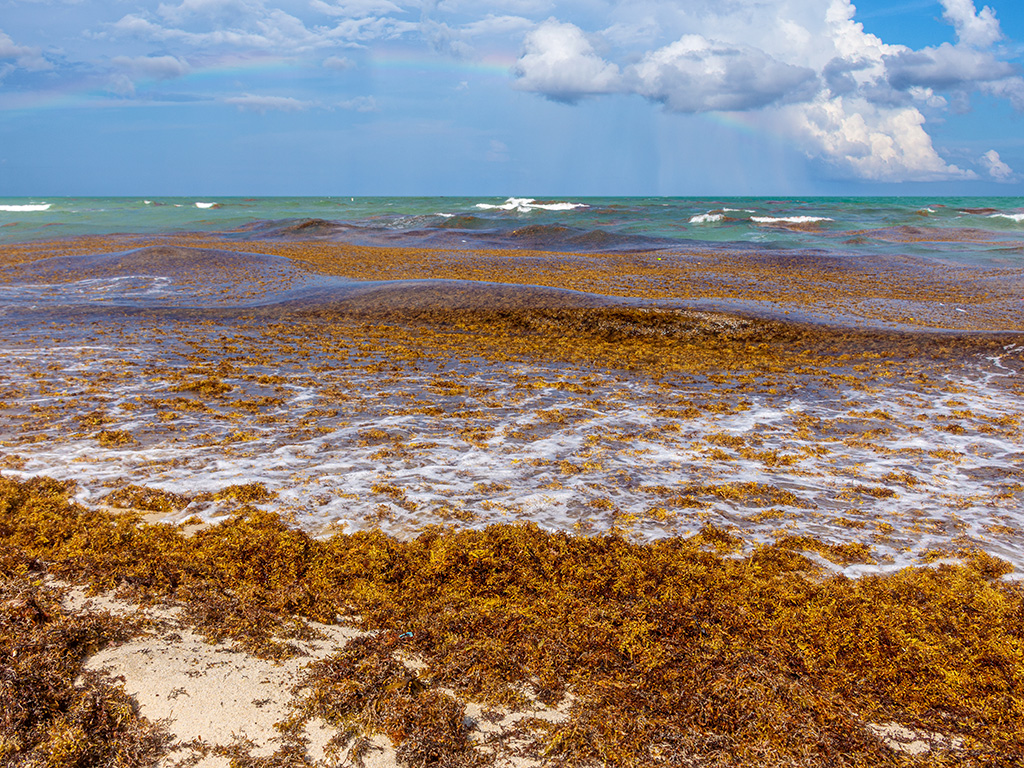What’s causing the Atlantic’s sargassum belt to grow out of control? A&M researcher discovers nutrient imbalance

marshalgonz/shutterstock.com
Weighing in at more 10 million tons and threatening marine life and the health of beachgoers, this year’s sargassum belt is breaking records and placing a damper on the upcoming tourism season.
Although accumulations of sargassum— a specific type of seaweed — dumped on coasts are typical for the summer season, this year’s bloom began forming in the Atlantic Ocean two months earlier than average and is expected to form even larger piles of rotting seaweed on beaches across the Atlantic Ocean and Gulf of Mexico. Some clusters have already landed in southern Florida, wreaking havoc from Miami to Fort Lauderdale.
Dr. Peter Morton, an associate research scientist in the Department of Oceanography in the College of Arts and Sciences at Texas A&M University and an active participant in sargassum research, has been working with a team of other scientists to understand why the sargassum belt continues to grow year after year.
In the process, Morton’s team has made groundbreaking discoveries, including the underlying cause for this abundant growth: a nutrient imbalance in the ocean.
“Every living thing is made up of carbon, nitrogen and phosphorus,” Morton said. “So, one of the things that you can study as far as the healthiness of an organism is if those ratios are in balance. What we’ve found is that the nitrogen to phosphorus ratio in this year’s sargassum belt is more than what you would expect compared to about 50 years ago, and it continues to increase.”
According to Morton’s research colleague, Dr. Brian LaPointe of Florida Atlantic University, the normal percentage of nitrogen in sargassum has increased by 35%, while the levels of phosphorus have decreased by 42% in the last 30 years — both of which are causes for concern.
“What we suspect is happening is that there’s an additional source of nitrogen that’s being provided into the ocean, and it’s enough to fuel the sargassum to grow at even greater abundance and biomass,” Morton said.

